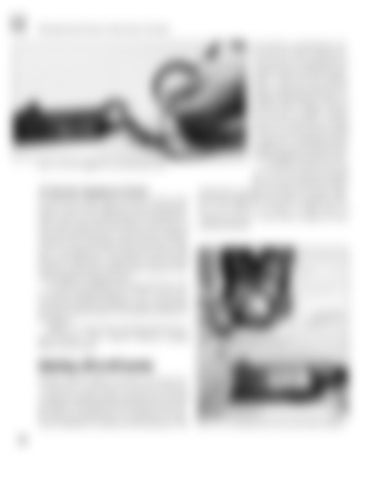POWERBOATER’S GUIDE TO ELECTRICAL SYSTEMS
Fig. 11-14. The “wiggle test” on a shore-power cord.
AC Resistive Equipment Checks To determine if the heater element in a hot-water heater (or any other appliance using a heating element) is OK, you can also perform a continuity test. First make certain that the breaker for the heater is off, and verify that power is not present by using the inductive tester described earlier and shown in figure 11-10 on page 167. Next, attach your meter to the black and white leads, respectively, at the terminal junction on the heater and check the resistance reading through the heating element. A resistance reading is to be expected if all is well. If you get a reading of infinity or “OL” on your meter, the element has developed an open circuit inside the heater, and the heater or the element will have to be replaced. Figure 11-15 shows this test being performed on a good element, with a typical resistance reading shown on the meter.
may also be a consideration. Entry into the silent world of inverter power is considerably less expensive than purchasing a generator. Noise and the exhaust fumes created by a generator are simply undesirable if a better alternative exists. Further, many of the inverters available actually work in two directions, creating the AC you want and also acting as high-end, multistage battery chargers for use at the dock when you’re plugged into shore power. At least for limited use, the DC-to-AC inverter has changed the way many small-boat owners satisfy their craving for AC power on board. Engineers have designed inverters that can produce as little as 50 watts to as much as 3,000 watts of continuous power—more than enough for most small powerboats.
Selecting a DC-to-AC Inverter Popular with the sailboat crowd for some time now, 12-volt-DC-to-120-volt-AC inverters are also becoming increasingly popular among owners of small powerboats. The reasons for this trend are quite simple. Space on small boats is at a premium, so a generator installation is usually out of the question. Cost 170
Fig. 11-15. A continuity test on a hot-water heater element.


































